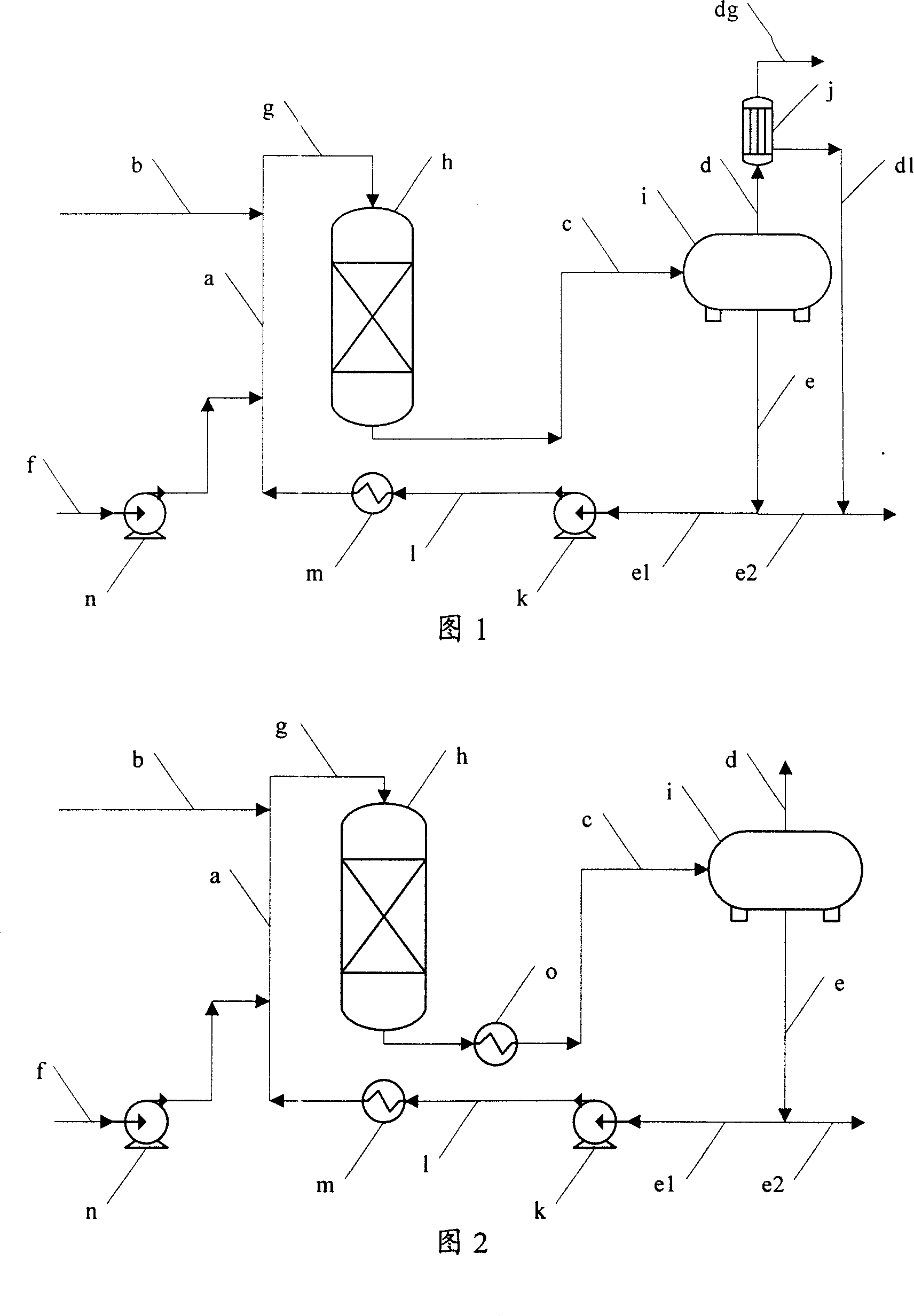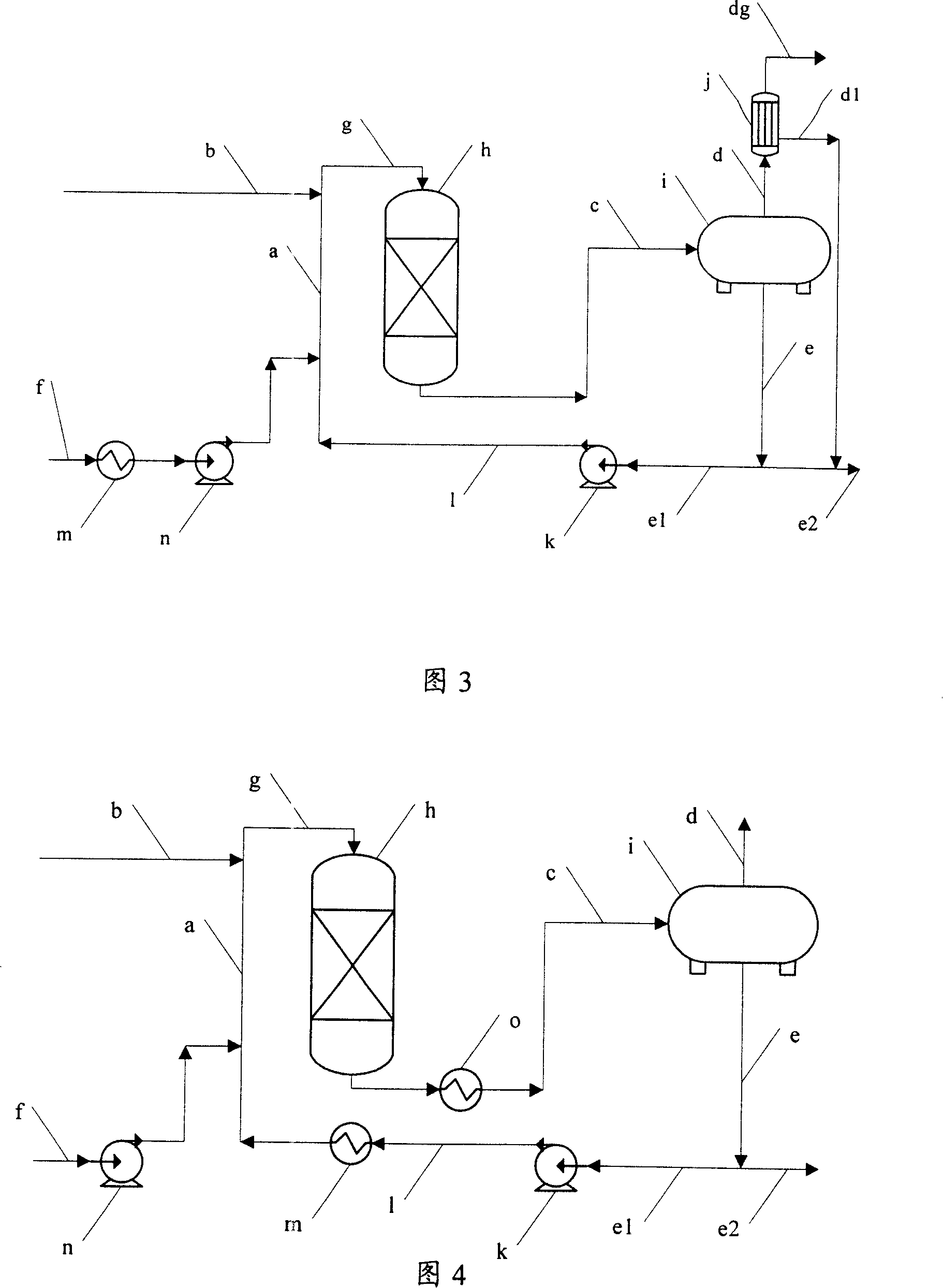Method for liquid phase selective hydrogenation of C3 hydrocarbons
A technology of selective hydrogenation and three liquid phases, applied in the field of liquid phase selective hydrogenation of propyne and/or propadiene to generate propylene, can solve the problems of increasing catalyst consumption, worsening properties of propylene polymers, reducing catalyst activity and the like, It is beneficial to the propylene rectification process, the equipment investment is small, and the operation is convenient.
- Summary
- Abstract
- Description
- Claims
- Application Information
AI Technical Summary
Problems solved by technology
Method used
Image
Examples
Embodiment 1
[0052] According to the flow process of the carbon three liquid phase selective hydrogenation of the present invention shown in Fig. 1, propyne and propadiene (MAPD) content is 6.7mol%, and flow rate is the fresh carbon three fraction f of 65.7ton / h and hydrogen b Mixing, the hydrogen flow rate is 380kg / h, the obtained mixture enters the reactor from the top of the selective hydrogenation reactor, passes through the selective hydrogenation catalyst bed in the reactor from top to bottom, and the carbon three-phase liquid phase selective hydrogenation catalyst BC -L-83 (provided by Sinopec Beijing Research Institute of Chemical Industry), the reactor pressure is 2.60MPa, the reactor inlet temperature is 35°C, and the reactor outlet temperature is 60°C. After the selective hydrogenation reaction, the output c at the bottom of the reactor mainly contains propylene, propane and MAPD with a content of less than 200ppm. The material c discharged from the bottom of the reactor direc...
Embodiment 2
[0058] According to Fig. 3 C3 flow process of the present invention, propyne and propadiene (MAPD) content is 6.7mol%, flow is the fresh C3 fraction f of 65.7ton / h and hydrogen b is mixed, and hydrogen flow is 380kg / h, so The obtained mixture enters the reactor from the top of the selective hydrogenation reactor, passes through the selective hydrogenation catalyst bed in the reactor from top to bottom, and contacts with the carbon three liquid phase selective hydrogenation catalyst BC-L-83, and the reactor pressure is 2.60MPa, the reactor inlet temperature is 35°C, and the reactor outlet temperature is 60°C. After the selective hydrogenation reaction, the output c from the bottom of the reactor contains propylene, propane and MAPD with a content of less than 200ppm. The material c at the bottom of the reactor tower directly enters a gas-liquid separation tank for gas-liquid two-phase separation, and the pressure of the gas-liquid separation tank is 2.56 MPa. The gas phase s...
PUM
| Property | Measurement | Unit |
|---|---|---|
| Energy consumption | aaaaa | aaaaa |
| Energy consumption | aaaaa | aaaaa |
| Energy consumption | aaaaa | aaaaa |
Abstract
Description
Claims
Application Information
 Login to View More
Login to View More - R&D
- Intellectual Property
- Life Sciences
- Materials
- Tech Scout
- Unparalleled Data Quality
- Higher Quality Content
- 60% Fewer Hallucinations
Browse by: Latest US Patents, China's latest patents, Technical Efficacy Thesaurus, Application Domain, Technology Topic, Popular Technical Reports.
© 2025 PatSnap. All rights reserved.Legal|Privacy policy|Modern Slavery Act Transparency Statement|Sitemap|About US| Contact US: help@patsnap.com


